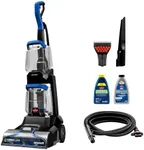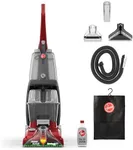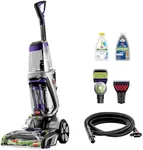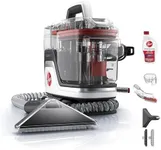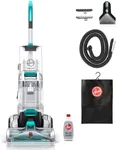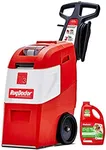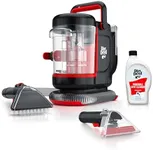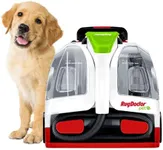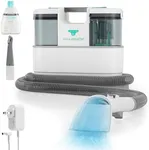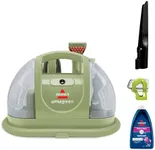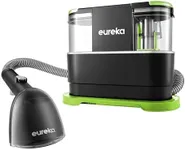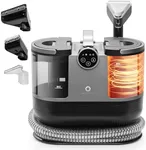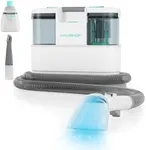Buying Guide for the Best Carpet And Upholstery Cleaners
Choosing the right carpet and upholstery cleaner can make a significant difference in maintaining the cleanliness and longevity of your furniture and carpets. The right cleaner will effectively remove dirt, stains, and allergens, leaving your home looking and feeling fresh. When selecting a cleaner, consider the type of surfaces you need to clean, the size of the area, and any specific cleaning needs you may have, such as pet stains or high-traffic areas. Here are some key specifications to consider when choosing a carpet and upholstery cleaner.Cleaning PowerCleaning power refers to the effectiveness of the cleaner in removing dirt, stains, and allergens from carpets and upholstery. This is important because a cleaner with strong cleaning power will save you time and effort while providing better results. Cleaning power can be measured by the motor's wattage or the suction power. Higher wattage or stronger suction generally means better cleaning performance. If you have heavily soiled areas or tough stains, opt for a cleaner with higher cleaning power. For regular maintenance, a moderate cleaning power should suffice.
Tank CapacityTank capacity indicates the amount of cleaning solution and dirty water the cleaner can hold. This is important because a larger tank capacity means fewer trips to refill or empty the tanks, making the cleaning process more efficient. Tank capacities can range from small, handheld models with around 0.5 gallons to larger, upright models with up to 2 gallons or more. If you have a large area to clean or prefer fewer interruptions, choose a cleaner with a larger tank capacity. For smaller spaces or spot cleaning, a smaller tank capacity will be more manageable.
PortabilityPortability refers to how easy it is to move the cleaner around your home. This is important because a portable cleaner will be easier to use, especially in tight spaces or on stairs. Portability can be influenced by the cleaner's weight, size, and design features like wheels or a carrying handle. Lightweight and compact models are ideal for quick cleanups and easy storage, while larger models may offer more power but can be harder to maneuver. Consider your cleaning needs and physical capabilities when choosing the right level of portability.
Attachments and AccessoriesAttachments and accessories are additional tools that come with the cleaner to help tackle specific cleaning tasks. This is important because the right attachments can enhance the cleaner's versatility and effectiveness. Common attachments include crevice tools, upholstery brushes, and pet hair removers. If you have pets, look for a cleaner with specialized pet tools. For cleaning stairs or tight spaces, a crevice tool or smaller brush attachment will be useful. Choose a cleaner with the attachments that best match your cleaning needs.
Drying TimeDrying time refers to how quickly the cleaned area dries after using the cleaner. This is important because faster drying times reduce the risk of mold and mildew growth and allow you to use the cleaned area sooner. Drying time can be influenced by the cleaner's suction power and the type of cleaning solution used. Some cleaners have built-in heaters or use hot air to speed up the drying process. If you need to use the cleaned area quickly or live in a humid environment, look for a cleaner with features that promote faster drying times.
Ease of UseEase of use refers to how user-friendly the cleaner is, including factors like setup, operation, and maintenance. This is important because a cleaner that is easy to use will make the cleaning process more enjoyable and less time-consuming. Features that contribute to ease of use include intuitive controls, easy-to-fill tanks, and simple maintenance procedures. If you prefer a hassle-free cleaning experience, look for a cleaner with straightforward instructions and minimal maintenance requirements. Consider your comfort level with operating appliances when making your choice.
